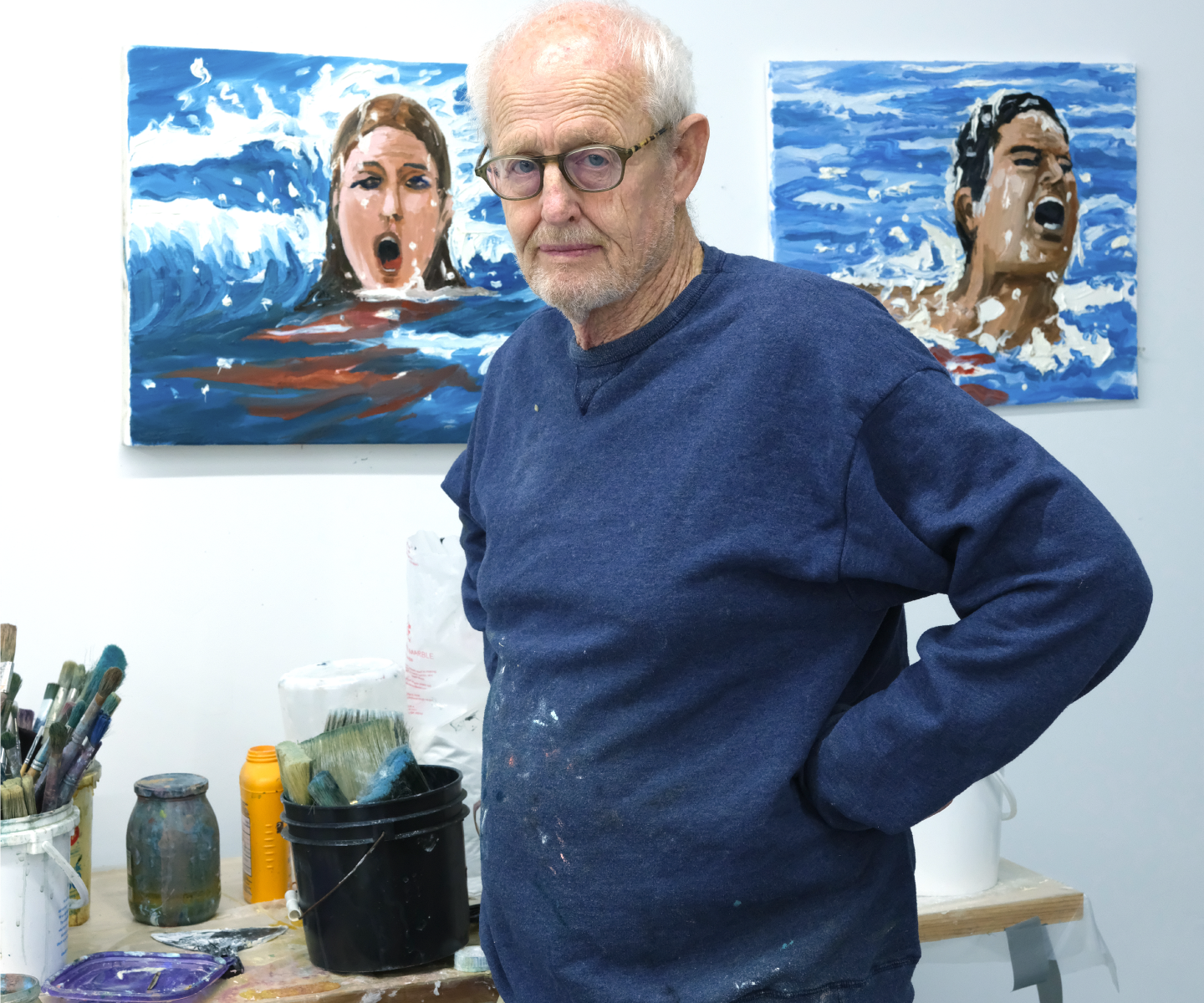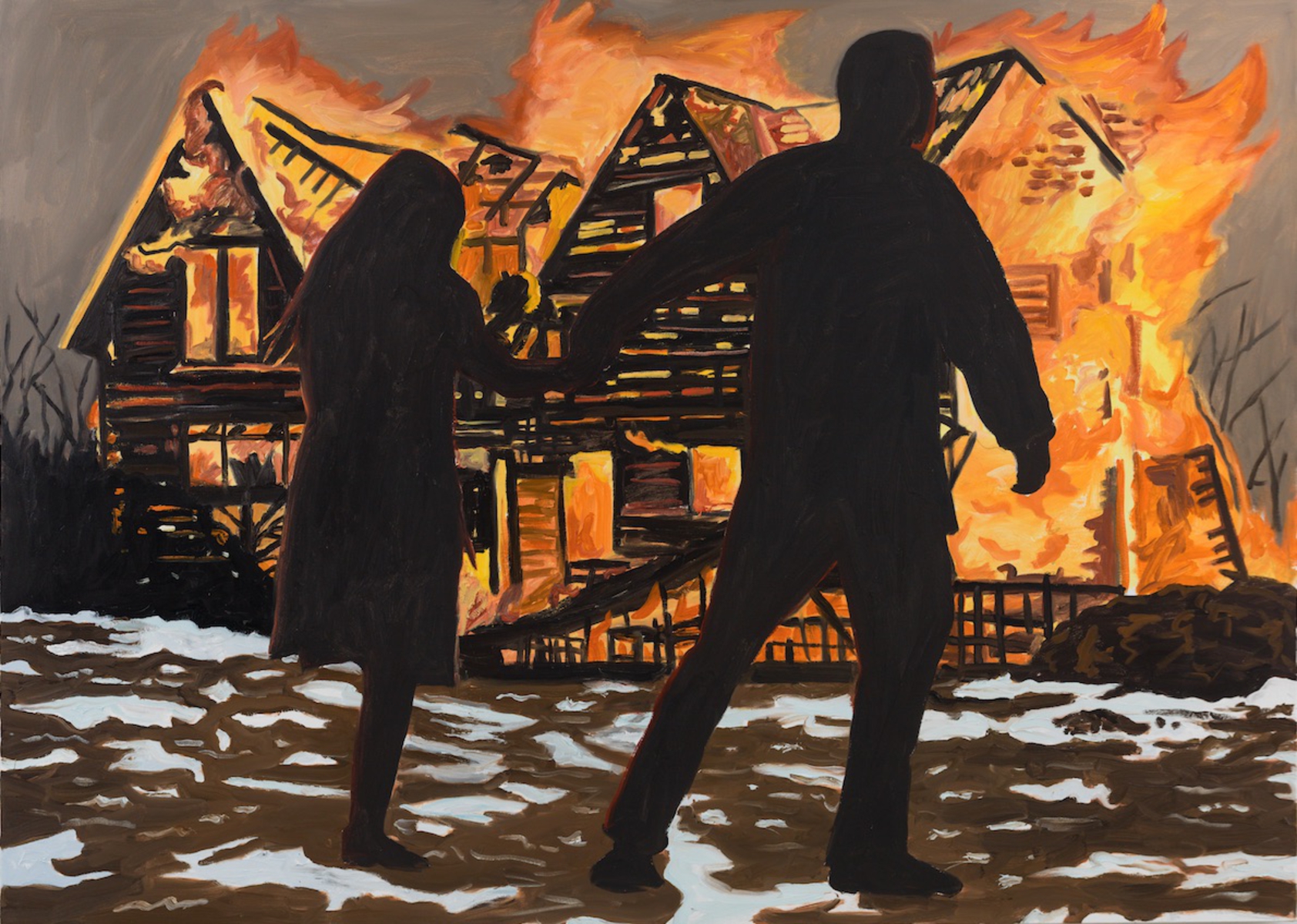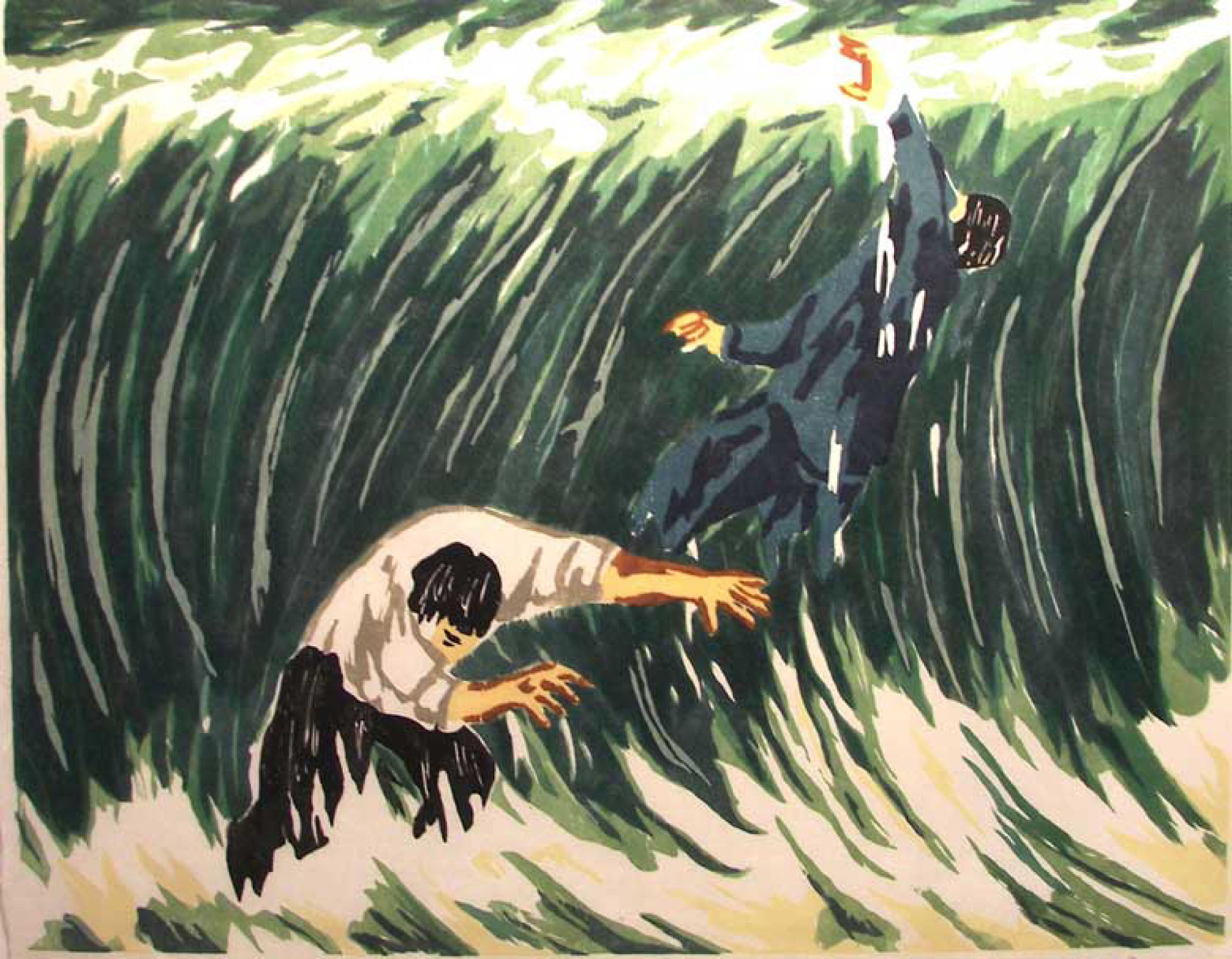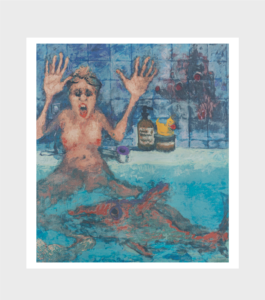Reinvent yourself again – a conversation with Richard Bosman
by Maylin Pérez
From a Dutch father and Australian mother, you were born in India but you are Australian and you live in New York. Different situations contributed to a multicultural and dynamic life. How has this influenced your artistic career?
I have traveled a lot and have been to every continent except for Antarctica. It does inspire a search for new images. I am a little wary of autobiographical reading of art but it’s sort of inescapable. The opposite would be someone like Morandi. I do like to travel to different cultures and like that feeling of being an outsider.

"I have always loved making prints which force the image to be reduced to its essence."
DOWNFALL
Silkscreen print,36.2 x 27 in (92 x 68.5 cm)
Produced on 300 g 100 % cotton Canson paper
At the end of the 60s you went to London to study art, just at the time of the splendor of Swinging London with a fascinating scene of social changes, especially in fashion and culture. How would you describe your experience at this stage if you compare it with your later studies in New York?
London was great during the 60’s. I went to a small art school…The Byam Shaw which was all studio classes. It was basically a feeder school for the Slade, Royal College and Royal Academy. The girls came to class in mini skirts and hats. The Mods were all the rage and people were very style conscious in their dress. I was there for 2 years and decided to go to the New York Studio School which had a fabulous faculty. The style was very different: jeans and a T-shirt or old army fatigues. I used to wear a tie partly because I had a part time job and to be a little different. I finished school around 1969 and spent the next decade surviving in NYC. I had a variety of menial jobs during the day and painted at night. I guess the work reflected the prevailing style at the time (mostly abstract) and didn’t feel terribly original.
When you returned to New York in 1980, you participated in your first exhibition, Illustration & Allegory, a group show curated by Carter Ratcliff at Brooke Alexander, Inc, a renowned gallery for working with original artworks and diverse print techniques such as: drypoint, engravings, aquatints, lithographs, serigraphs, among others. What did it mean to you to do this show in collaboration with other artists like Robert Longo?
My first show was a mixture of the sea and allegorical Chinese images. Almost all art was abstract at the time and Illustration & Allegory was an early example of the new figuration. It later became known as Neo Expressionism. Brooke Alexander would visit my studio regularly and became interested in linoleum prints that I made and the paintings that followed from the prints. He had a long history of print publishing and had just started representing painters. The show received favorable press in the NY Times and Art magazines. The following Fall I had my first one man show with Brooke.
The 80s were very successful in your professional career. In this flourishing period, you complemented the figurative expressionist style with oeuvres inspired by Film noir, with a large dose of action and static photography. The influence of the cinema is evident. What attracted you to combining these elements in your work?
I had to ask myself who I was and what made me different. So I started using images from Chinese comic books (Chinatown was rearby) and the allegorical nature of the images appealed to me. I was also reading Robert Van Gulik, a Dutch author who translated The Judge Dee stories from ancient China. Arguably the first Mystery stories ever. Judge Dee was both the detective and the law. Most crimes were solved by dreams or weird intuitions. All this led naturally to contemporary film noir.
In the following years you developed serial artworks, inspired by nature, History, travels and the human being performing different actions that range from the everyday like swimming on a beach or even the unpredictable like crying desperately in the rain. What motivates you to switch from one topic to another and how it fits into the art market?
Making figurative art in the early 80’s brought a new set of issues that weren’t present in abstract art… social, political, cultural etc. There was more of an emphasis on reinterpreting the content that came with the introduction of the figure and how it related to society at that time. It was very freeing and opened up a whole new set of possibilities. I’d like to keep that freedom as it relates to subject matter. I have always loved making prints which force the image to be reduced to its essence. Also its democratic aspect, which since it’s a multiple makes it more widely available
My motivation comes from the desire to immerse myself in the process of painting, to feel the power of invention and concoct a coherent and believable form using space and light.


You are currently collaborating with Multiplo on a new project with the work Downfall, printed in silkscreen. Could you share more info about this oeuvre and how important is it for you to carry out this project working with the Roux family, leading contemporary art collectors based in Latin America?
The woman screaming under the rain represents a kind of femme fatale or a noir film character. The interpretations of the scene can be diverse but maybe she is just reinventing her-self again. This collaboration with Multiplo is very unique and exclusive because I don’t have any project like this one in Latin America. Finally I’m always excited to see something new and that includes my art which I think of as a form of travel.
I am very enthusiastic about participating in Multiplo’s project. It echoes my concern that art should be more available to more people. I have worked with many great printers and I always learn from collaborative situations like these.


